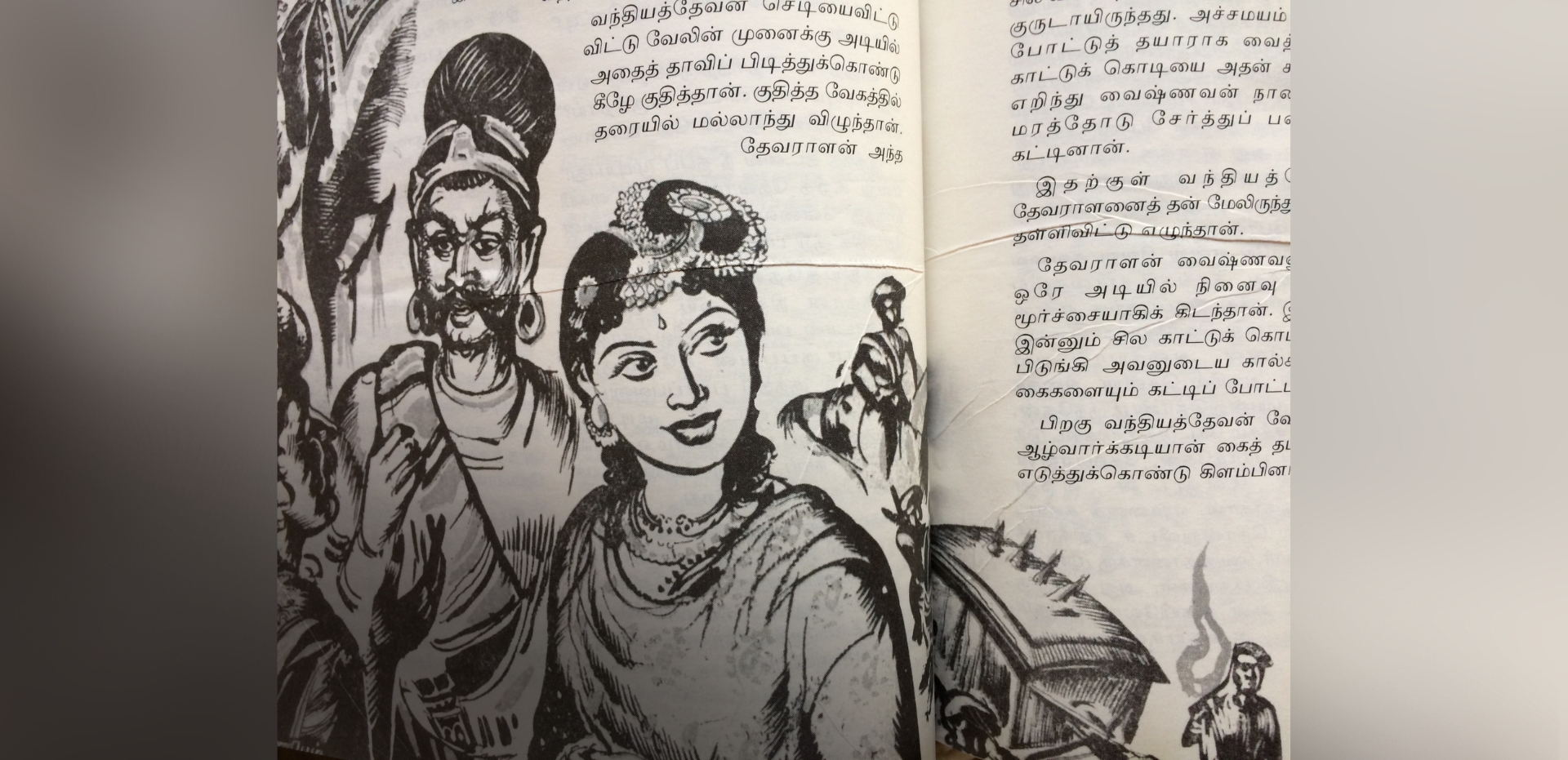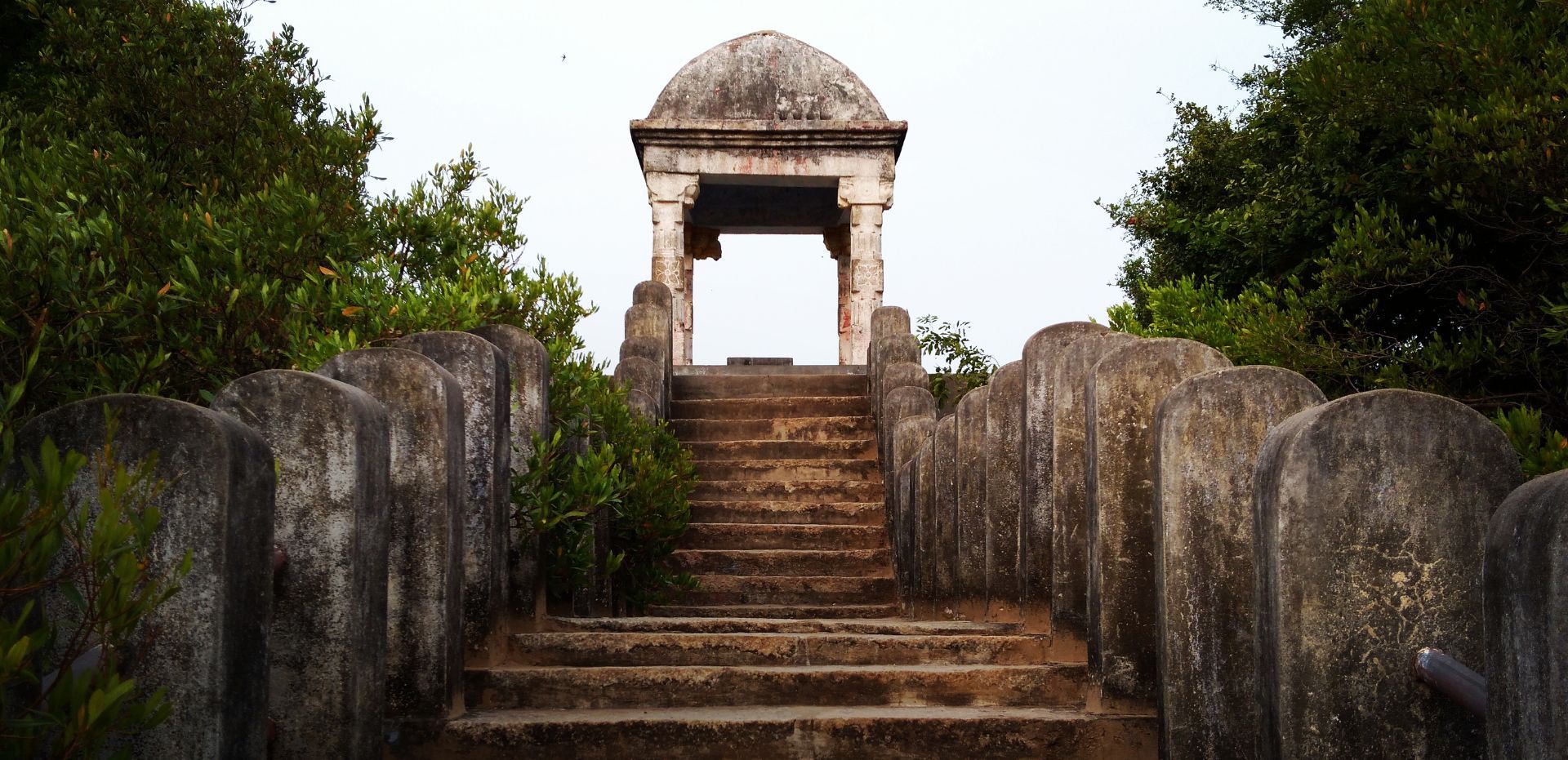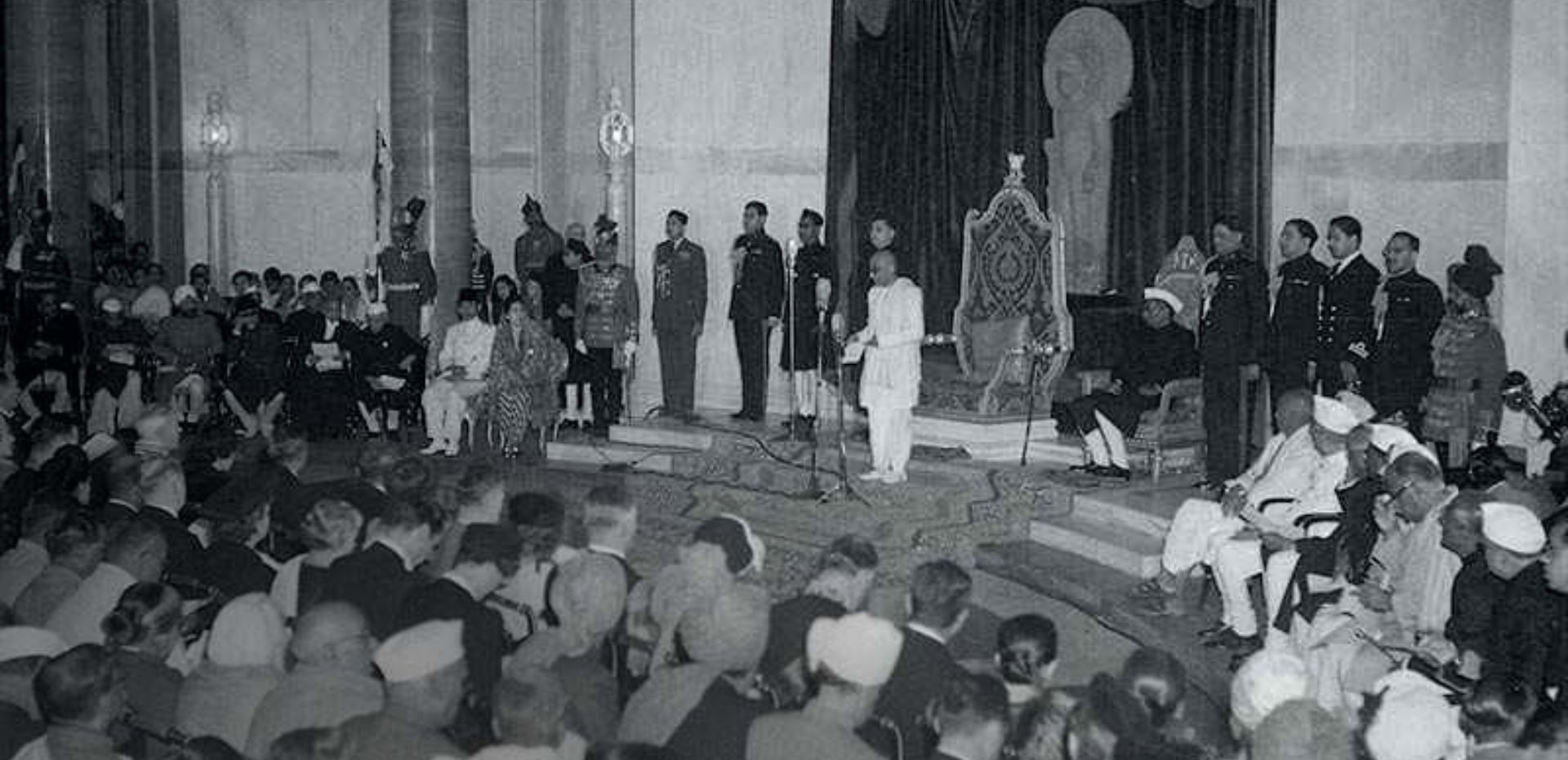Ahmadnagar: The Sultans’ Fading Legacy
BOOKMARK
Ahmadnagar is a city founded by the Nizam Shahs in 1494, and they ruled their kingdom from here for over a century. One of the great Deccan Sultanates, the kingdom was powerful, and under the patronage of the Nizam Shahs, Ahmadnagar became one of the great urban and cultural centres of the Deccan.
Sadly, over the years, there has been a steady decline in the historic, physical fabric of the city due to neglect. Worse, many of the city’s mosques, palaces and other historic buildings have been demolished in the course of the last century.
– The decline started with the British, who converted many of the old city palaces into administrative or residential buildings in the 19th century, a practice that continues till today.
For example, Qasim Khan’s palace, with its two important stone columns, is being used as the District Collector’s residence; Mengani Mahal has been converted into a jail; and Changiz Khan’s palace, which has a wonderful ceiling, houses the District Court. All these buildings date to the latter half of the 16th century.
While some of the buildings were rescued from such secondary functions, and a smaller fraction of them were afforded protected status (for example, Salabat Khan’s tomb was declared protected), a large number of significant monuments in the city has simply fallen off the radar. Of the several dozen architecturally and historically significant buildings and sites in and around the city of Ahmadnagar, only seven have protected status as monuments of national importance. These include the Farah Bakhsh Bagh, Mangalwar Gate, Sarje Khan’s Tomb, Damdi Masjid, Mecca Masjid, the mosque in Bara Imam Kotla and Salabat Khan’s Tomb. Meanwhile, there are several palaces and historic sites from the 16th century, many of extraordinary architectural or historic significance, that are quickly falling into ruin through either benign neglect or malicious acts of encroachment, vandalism and destruction.
The Maharashtra State Directorate of Archaeology and Museums is seriously understaffed, and therefore cannot and does not seem to want to take on additional responsibilities. This is the only reason one can think of to justify why it has not notified any of the 16th-century buildings in the city, such as the Kotwali Police Station, which was once a mosque. Ironically, the municipal authorities themselves occupy historical buildings like Ni’mat Khan’s palace. There is no policy to document its own premises, let alone documenting any other building in the city!
But Ahmadnagar is not in a unique predicament. Almost every historic city in the country has the same issue. This is because, apart from a lack of political and social will, there are several administrative and legal structures that do not facilitate a vision for protection of our architectural history.
Defining the Problem
a. Who is in control?
As surprising as this may sound, sites of cultural or natural importance in India are not automatically deemed protected. They have to be ‘legally’ notified. Various legislations and a multitude of agencies in charge complicate the picture, as architectural and historical sites are given (or not given) various levels of protection. Thus, we have a mosaic: sites of national importance, important sites for the different states, places in the custody of various trusts, and so on. There is no cohesive policy on these, and there are few checks and balances. Meanwhile, an even larger number of monuments remains out of the purview and is completely unprotected. While some of them, in Ahmadnagar for instance, have been reported as notices in the Reports of the Archaeological Survey of India (ASI), nothing has been done. It is these sites that are the most vulnerable to encroachment and vandalism.
It doesn’t help that there are so many stakeholders in this scenario: the Government of India, state governments, municipal authorities and their heritage cells and the owners of the sites. Several non-governmental organisations and citizens’ groups like the Indian National Trust for Art and Cultural Heritage (INTACH) also have interests in the upkeep of sites of natural and cultural importance. All these entities have completely different interests and pressures in dealing with heritage sites, and therefore understand them differently.
Second, for most private owners of historic and culturally significant properties, any protected status is a liability. A protected monument can’t be exploited commercially or sold unconditionally. Very often, owners would rather destroy their own patrimony/inheritance before it can be deemed protected. In fact, this attitude often spills over onto a larger group, who believes that these old heritage properties impede the development and growth of a city. Lack of awareness of their own neighbourhood histories, its significance, and a resultant pride is generally missing.
b. Reasons for loss
In the case of Ahmadnagar, apart from the few sites that enjoy some level of protection from the ASI, or ownership by the Ministry of Defence, most sites have been completely destroyed or are in the process of being ruined. Ahmadnagar was founded by the Nizam Shahi dynasty (reg. 1490-1636 CE), and has several architectural and historic sites. There seem to be four major reasons for the loss of historic sites, which I will illustrate with examples here:
1. Neglect: This is the commonest cause of loss of architectural heritage, particularly when vegetation has taken over and threatens to erode the physical fabric of the building. Sometimes, neglected sites also become the locus for undesirable activities, such as defecation, public drinking, gambling, of which traces are seen in many places.
While apathy can sometimes act as a preservation mechanism, in most cases, historic sites become dumping grounds for garbage. For example, a subterranean 16th -century hammam in Ahmadnagar with a unique badgir or wind-tower remains completely neglected and is slowly getting destroyed. Once a fantastic summer retreat, this site channels warm breezes and cools them as they are brought underground. Such towers are commonly seen in Iran.
The hammam and badgir were used as a garbage dump for years, and there was even some unauthorised construction atop the structure. There is little awareness of the site and no plans to transform it. It is located within a larger Nizam Shahi campus called Hasht Bihisht Bagh or the ‘garden of eight paradises’ (now locally known as Bihisht Bagh), where several 16th-century buildings were set in gardens and orchards. In the last 15 years, the area has seen unprecedented construction, and the growth of the city has strangled the landscape. The people who have moved in have very little knowledge of the history of the area and are largely disinterested in it.
The palace pavilion of the Hasht Bihisht Bagh once had beautiful stucco decoration and unique construction technology, both of which are in an advanced state of decay. These buildings are now used as places of recreation, desirable and undesirable, by local youth. Plastic trash, playing cards and empty liquor bottles are among the debris commonly found at the site.
2. Encroachment: There are several kinds of encroachment – individual, communal and institutional. Individual encroachment is when a person usually starts squatting in a historic building and eventually claims rights of custodianship. Some of these claims are connected with the upkeep of a grave of a holy man or a small temple, which are invariably constructed on the property with a view to usurping it. Manjarsumbah, a 16th-century Nizam Shahi palace atop a hill about 10 km north-west of Ahmadnagar, is a spectacular site. Here, the grave of a holy man has miraculously appeared in the last decade. There are already claimants for its custodianship, and being an unprotected site, there is no authority that will be forced to evict the encroachers.
Communal encroachment takes over entire building complexes, such as the Bara Imam Kotla at Ahmadnagar, once a great academy of learning. The entire precinct is now completely occupied, and the physical fabric is being slowly altered to suit the lifestyles of the inhabitants. These accretions and modifications eventually can become irreversible.
There are also historic buildings such as the Lakkad Mahal, most probably from the latter half of the 16th century, which has been taken over by an international religious organization next to it. They use the building as a large warehouse, a dumping ground and a shed. One of the larger palaces in the city, it is relatively unknown and will soon be unsalvageable.
3. Inappropriate Intervention: In the case of Alamgir, the campsite where Aurangzeb died outside Ahmadnagar, the original campus has seen the addition of enormous new buildings, and all kinds of changes completely out of character with an important historic, imperial site. While the custodians of the site, the Dar-ul-Uloom Madrasa, did have a need to expand their programme, it could have been done in consultation with architectural historians and conservation architects, so as not to alter the character of the site.
But why blame the uninitiated when there is no legal framework to guide the owners and custodians of unprotected sites? After all, elsewhere, some of the most egregious repairs have been conducted on protected buildings and have resulted in the loss of historic fabric and architectural details of the period. In many instances, well-intentioned concern can also result in completely inappropriate methods of restoration, as evidenced in the repairs undertaken by municipal authorities to restore the Mughal-period, city gates of Ahmadnagar.
In Ahmadnagar, many local civic and other administrative agencies occupy buildings dating to the Nizam Shahi period. Now heavily modified, these include the District Collector’s official residence (Qasim Khan’s palace), the District Court (Chingiz Khan’s palace) and the jail (Mengani Mahal).
4. Vandalism: Unfortunately, this is the most ubiquitous cause for the loss of historic architecture. With or without ideology, these are intentional acts to destroy elements of historic fabric. In recent months, the press has covered the destruction of several sites in the World Heritage site of Hampi in Karnataka. Smaller sites with lesser protection are often targets, but better-protected places are not exempt. The tomb of Malik Ambar at Khuldabad is a protected monument of national importance but was vandalised just a few years ago, and the beautiful jalis on its walls were destroyed. The simplest forms are graffiti, often etched into historic plaster, but in its more horrific form, entire structures have been destroyed. Sometimes, the owners of lands with unprotected historic structures demolish them so that there are no restrictions on future use.
The Adhai Ghumat site is a case in point. It was partially demolished about 20 years ago. The destruction of unprotected sites might not necessarily constitute a violation of the law but it is still an act of vandalism.
Protected & Unprotected
Ironic as it may sound, sometimes, benign neglect is better than well-intentioned but inadvertent incompetence. Completely unprotected sites are the worst victims of apathy and neglect. Many are disappearing extremely quickly.
While there are standard procedures for notifying sites, these, I found were arbitrarily applied. In fact, when I filed a Right to Information (RTI) query in 2008, asking for the objective or other criteria used to declare buildings and sites to be of national importance. The ASI replied through a letter dated 9 January 2009 (F.No. 2/36/2008-M), that: “With reference to the subject cited above, I am directed to inform that there is no objective criteria for a monument or site to be declared as a monument or site of national importance. But while examining whether the monument under reference is of national importance or not, its importance from historical, archaeological or artistic point of view is evaluated keeping in view almost similar parallels already under protection.” [emphasis added]
My RTI was in response to the failure of my application seeking protected status for two building sites in Ahmadnagar that were historically significant and architecturally unique. With the reply I received, it was clear that they could never be made monuments of national importance – anything novel and unique could not be “almost similar parallels.”
Legal protection, then, it must be said, is difficult to get, and in any case, even that is no guarantee against partial destruction. The sites I was interested in having declared protected (a) were associated with events that made significant contributions to the broad patterns of history (b) associated with the lives of persons significant in our past (c) they embodied distinctive characteristics of the period, of types, and methods of construction, and (d) yield, or are likely to yield, information important to history. Any one of these four criteria would be enough to have a site included in the National Register of Historic Places in the United States.
The Way Forward
Where do you pin the problem, when you look at the dire state of our monuments? Should we blame legacy and a lack of resources? The historic contingency of having several princely states with their own archaeological services across British India and the reorganisation of states with the Republic of India suddenly burdened the ASI as it became the office for central oversight of archaeological and historical remains. Sadly, strapped for resources, there was no incentive for the ASI to add monuments of national importance to their already overstretched service. The states had no incentive either, and therefore the lists of protected monuments have hardly grown in the last 50 years.
Moreover, while looking at heritage, we often forget the context. Individual buildings are often completely isolated from their sites, just as objects are distanced from their context, and factoids are devoid of larger knowledge. There is no comprehensive sense of architectural heritage as situated in a greater site, city, state, nation, or the world. Making citizens aware of their own legacy, through targeted activities, and generating a sense of pride and a sense of place is very important. After all, the architectural fabric is a constant reminder of our history, and unless it is seen as an integral part of our past, we risk losing our past completely.
– ABOUT AUTHOR
Pushkar Sohoni teaches at the Indian Institute of Science Education and Research (IISER) Pune. He has lectured and written extensively about different aspects of the Deccan sultanates, including fortification and coinage.
Live History India is a first of its kind digital platform aimed at helping you Rediscover the many facets and layers of India’s great history and cultural legacy. Our aim is to bring alive the many stories that make India and get our readers access to the best research and work being done on the subject. If you have any comments or suggestions or you want to reach out to us and be part of our journey across time and geography, do write to us at contactus@livehistoryindia.com
Join us on our journey through India & its history, on LHI's YouTube Channel. Please Subscribe Here





























